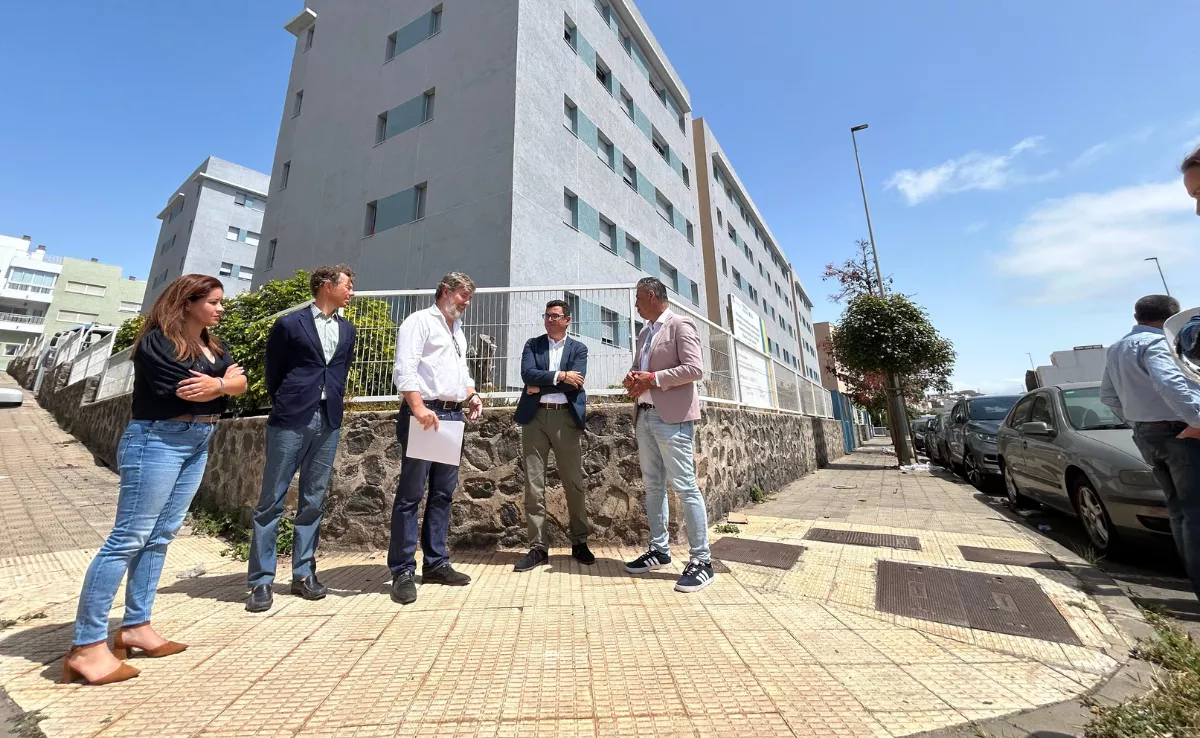
The Government of the Canary Islands, through the Department of Public Works, Housing and Mobility led by Pablo Rodríguez, has completed the energy rehabilitation works of two residential buildings on the island of Tenerife, totalling 110 protected homes.
The project, executed by the public company Visocan, involved a total investment of over 3.2 million euros, sourced from the Next Generation European funds included in the Recovery, Transformation and Resilience Plan of the Government of Spain.
In light of the completion of the works, Councillor Pablo Rodríguez visited the La Gallega building accompanied by the Director of the Canary Islands Housing Institute (ICAVI), Antonio Ortega; the Manager of Visocan, Javier Terán; the Technical Director of Visocan, Ignacio García; and the councillor delegated for Housing in Santa Cruz de Tenerife, Ana Belén Mesa.
During the visit, Rodríguez emphasised that “we are on track to continue providing real answers to the people of the Canary Islands. It’s not just about building new homes from scratch, which is a slower process, but also improving the existing public housing stock, ensuring its preservation and adapting it to current needs.”
“Our commitment goes beyond the construction and rehabilitation of buildings; at Visocan, we advocate for a model of sustainable urban development focused on people. We want to be an active and transformative agent that promotes innovative solutions for Canary Island families, while taking care of the environment. These projects, in addition to improving the comfort of our tenants, typically yield energy savings of over 70 percent,” noted the Manager of Visocan, Javier Terán.
The works carried out have allowed the La Gallega building to improve its energy rating from G to B, and the Armeñime building from G to D. The average annual energy consumption has been reduced by 89.6% and 73.8% respectively, resulting in significant savings in kilowatt-hours per square metre.
The works included enhancing the thermal envelope through insulation on façades and roofs, replacing external carpentry with double-glazed windows and blinds, and installing individual solar panels for the production of hot water. Additionally, photovoltaic energy systems have been incorporated for the electrical supply of communal areas.
Visocan has already drafted two new similar projects pending execution: one in Garachico, on the island of Tenerife, for 60 homes, and another in Santa Lucía de Tirajana, Gran Canaria, for 36. This way, the Government of the Canary Islands continues to advance towards a more modern, efficient public housing stock adapted to current climate and social challenges.
All housing initiatives in the Canary Islands are carried out under the +VICAN initiative to strengthen and coordinate housing policies in the archipelago.
The main objective of this strategy is to provide a comprehensive response to the housing emergency through the implementation of sustainable and inclusive solutions. +VICAN aims to guarantee access to dignified housing, prioritise the most vulnerable groups, and promote balanced territorial development tailored to the current needs of the Canary population.













